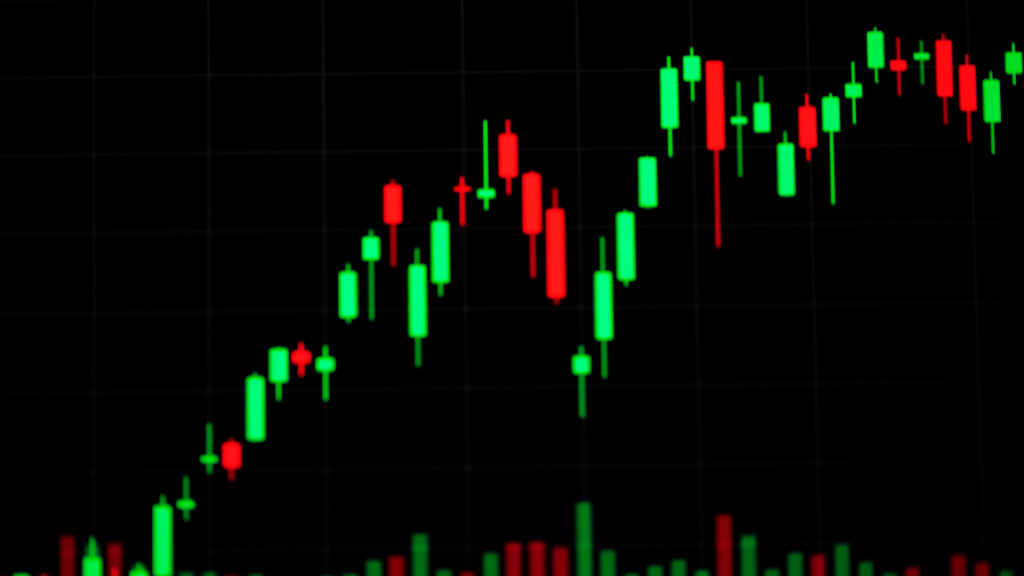Understanding Market Momentum
Market momentum reflects the pace of price changes within the financial markets. It’s a crucial concept for those seeking to capitalize on market trends.
Definition of Market Momentum
Market momentum is the tendency of securities to continue moving in their current trajectory. It gauges the speed and magnitude of price movements, playing a pivotal role in technical analysis. Strong momentum can indicate a prolonged price trend, either upward or downward.
Historical Perspective on Market Momentum
Historically, market momentum has been pivotal in shaping investment strategies. Analysts have long utilized momentum indicators, dating back to the early 20th century. The concept gained prominence with the development of quantitative models and remains integral to modern trading strategies, as evidenced by successful funds leveraging this type of analysis.
Driving Forces Behind Market Momentum

Various factors can influence market momentum, affecting the speed and direction of price movements in securities. Understanding these forces helps in crafting effective investment strategies.
Psychological Factors
Investor psychology plays a crucial role in market momentum. Emotions like fear and greed drive buying and selling decisions, causing price swings. For instance, fear can lead to a sell-off, while optimism may cause a buying spree. Herd mentality, where investors follow the actions of others, further amplifies momentum. This collective behavior often results in significant price trends.
Economic Indicators
Economic indicators provide essential insights into potential shifts in market momentum. Data like GDP growth rates, employment numbers, and consumer confidence indexes impact investor sentiment. For example, positive GDP growth can boost investor confidence, driving stocks higher. Conversely, rising unemployment figures may deter investment, contributing to downward momentum. Studying these indicators aids in predicting future market conditions and momentum shifts.
Measuring Market Momentum
There are several ways to gauge the speed and direction of price movements. Investors often rely on specific indicators and analyses to make informed decisions.
Commonly Used Indicators
Indicators offer quantitative tools for assessing momentum. I’ll discuss a few widely-used ones:
- Relative Strength Index (RSI): This measures the magnitude of recent price changes, indicating overbought or oversold conditions. An RSI above 70 suggests an asset is overbought, while below 30 indicates oversold conditions.
- Moving Average Convergence Divergence (MACD): This shows the relationship between two moving averages of a security’s price. A positive MACD suggests upward momentum, and a negative MACD indicates downward momentum.
- Moving Averages (MA): These smooth out price data, creating a single flowing line. Common types include simple moving averages (SMA) and exponential moving averages (EMA), which help identify trend directions.
Technical Analysis vs. Fundamental Analysis
Technical analysis focuses on past price movements and patterns. I often use charts and indicators to predict future price actions based on historical data. It doesn’t consider the intrinsic value of assets.
In contrast, fundamental analysis evaluates securities by examining financial statements, industry trends, and economic factors. When determining true value, I look beyond price movements, considering a company’s performance and the broader market context.
Both methods play crucial roles in understanding market momentum, providing distinct perspectives that can guide investment decisions.
The Impact of Market Momentum on Investors
Market momentum significantly influences investor strategies and decision-making. An understanding of its impact allows investors to maximize returns while managing risks.
Opportunities Created by Market Momentum
Market momentum offers a range of opportunities for investors. Rapid price movements create potential entry and exit points for traders aiming to capitalize on short-term fluctuations. Momentum-driven stocks often outperform the broader market, allowing investors to achieve substantial gains when trends persist. For example, in a strong upward market, stocks with high momentum typically yield higher returns. Active monitoring of momentum indicators, like the RSI and MACD, helps identify such opportunities quickly.
Risks Associated with Market Momentum
While market momentum presents opportunities, it also carries inherent risks. Rapid price changes can lead to increased volatility, exposing investors to potential losses if the momentum quickly reverses. Sudden shifts driven by external factors, such as economic news or geopolitical events, can adversely impact momentum-driven trades. Reliance on momentum without considering underlying fundamentals might result in unexpected downturns. Hence, a balanced approach incorporating both momentum and fundamental analysis mitigates these risks effectively.
Why Market Momentum Matters
Market momentum serves as a crucial indicator of potential price movements, impacting market trends and investment strategies.
Influence on Market Trends
Market momentum significantly shapes market trends. When securities exhibit strong momentum, they tend to sustain their trajectory. For instance, upward momentum often leads to extended bullish trends, while downward momentum can result in prolonged bearish ones. This sustained movement helps analysts anticipate future market directions, making momentum an invaluable tool for predicting market shifts.
Effect on Investment Strategies
Investment strategies benefit greatly from understanding market momentum. Momentum-driven strategies, such as momentum investing, capitalize on trending stocks to achieve returns. By identifying stocks with strong positive momentum, investors can ride the wave of rising prices, optimizing entry and exit points in their portfolios. Additionally, integrating momentum analysis with other methods, like fundamental analysis, enhances strategy robustness, balancing potential gains with risk management.

 Kimm Centenolla, the visionary behind Funds Fortune Roll, has dedicated their career to empowering individuals with the knowledge and tools needed for financial success. With a passion for economics and wealth-building strategies, Centenolla established the platform to bridge the gap between complex financial concepts and practical application. Their commitment to providing accessible insights and actionable advice has made Funds Fortune Roll a trusted resource for investors of all levels, helping them navigate the ever-changing financial landscape with confidence.
Kimm Centenolla, the visionary behind Funds Fortune Roll, has dedicated their career to empowering individuals with the knowledge and tools needed for financial success. With a passion for economics and wealth-building strategies, Centenolla established the platform to bridge the gap between complex financial concepts and practical application. Their commitment to providing accessible insights and actionable advice has made Funds Fortune Roll a trusted resource for investors of all levels, helping them navigate the ever-changing financial landscape with confidence.